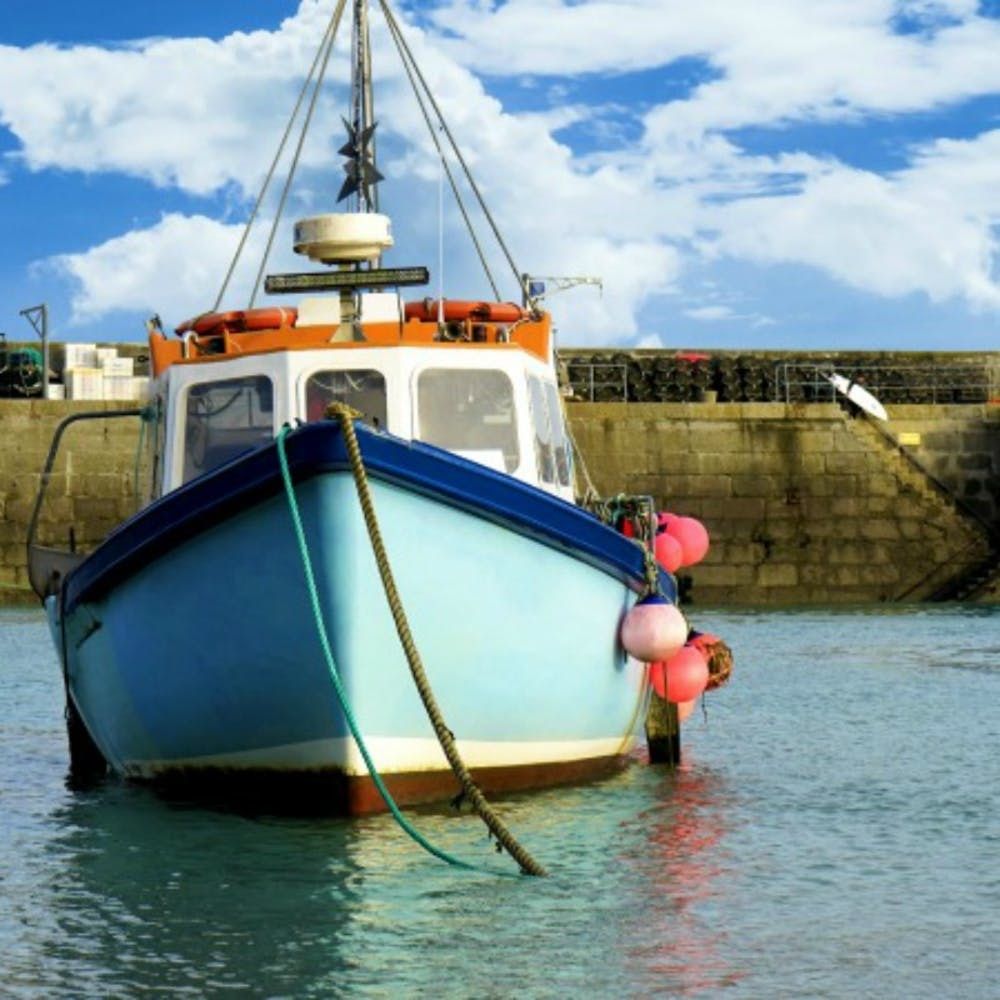Being a responsible consumer can be tough — especially when it comes to buying sustainable seafood. Between all the different labels and fishing methods, the fish counter can be downright overwhelming. But with the current state of climate change, the awful effects of bycatch, population issues, and pirate fishing, it's incredibly important to oppose destructive fishing practices by shopping smart. This doesn't mean you have to swear off of your fave high-protein low-fat meat! This guide will help you know what to look for, and what to ask your fishmonger if things aren't clear.
Download the Info
Sustainable seafood has become so important that there's a free app for it, thanks to Monterey Bay Aquarium's Seafood Watch. You can search for seafood by market name and get the answers you need while perusing the fish counter. As if that wasn't awesome enough, you can also find restaurants and stores near you that serve ocean-friendly seafood. Another handy tool that Seafood Watch offers is this state-specific consumer guide. Bookmark it or print it out and keep it in your handbag so you can find the good stuff where you live, and wherever you travel!
Photo Credit: Stand With Main Street
Learn fishing and farming methods
Certain fishing and farming methods hurt population, result in bycatch, and support pirate fishing. It's important to avoid supporting these methods, so knowing where your fish comes from and the method in which it was caught is a must. Thankfully, a lot of markets are down with transparency and clearly label their seafood with this information. If fish isn't labelled, strike up a conversation with the fishmonger and ask some questions.
Watch for labels
One of the most common labels you'll see with sustainable fish is the “Certified by the Marine Stewardship Council (MSC)" label. This blue fish label is *only* applied to wild fish or seafood derived from fisheries that have been certified to the MSC Fisheries Standard — a set of requirements for sustainable fishing based on science, so you can trust them. Some other labels you'll see are green (best choice) or yellow (good alternative). The red (avoid) label does exist, but it's rare that you'll see a grocer who prides themselves on transparency offer anything on the “avoid" list. Of course, if you do see it, avoid it.
Keep an eye on Canned fish
Many of us associate sustainability with fresh or frozen fish, but canned fish has a big place in this discussion as well! Take canned tuna, for example; it's a pantry staple in homes nationwide, and most tuna brands support destructive fishing practices. Fortunately, Greenpeace USA has a useful Tuna Shopping Guide that can help you buy sustainably-sourced canned tuna.
Some other major offenders in the canned fish aisle include crab and shrimp. Avoid crab from Asian fisheries which are typically labelled as “swimmer crab," “swimming crab," “blue swimmer crab," “jumbo lump crab," or “backfin lump crab," and opt for trap-caught Dungeness crab from Canada, Washington, California, and Oregon. As for shrimp, they should be harvested in the U.S. from the West Coast or Alaska. Most shrimp labelled as “tiny pink shrimp" or “salad shrimp" are products from the U.S. and are considered a good choice.
Do you have any tips and tricks for people new to buying sustainable seafood? Tweet us @BritandCo!
(Photos via Porapak Apichodilok, Mike, and Tookapic / Pexels.com)
